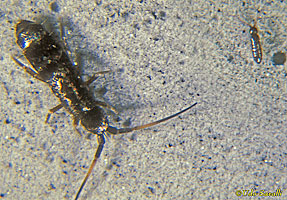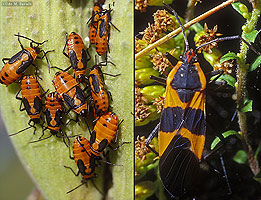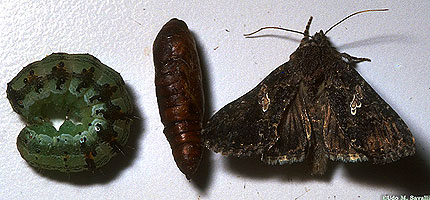BIO 385 — Invertebrate Zoology | |||
Invertebrate Diversity
| |||
Insecta CharacteristicsSee also Insect Coloration Page |
Class Insecta | |||
Apterygota* — Primitively wingless insects | |||
Order Archaeognatha
|

Jumping Bristletail; KY |

Jumping Bristletail; MT | |
Order Zygentoma
|
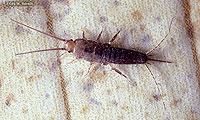
Firebrat, Thermobia domestica; CA |

Gray Silverfish, Ctenolepisma longicaudata; AZ |

Common Silverfish, Lepisma saccharina?; AZ |
Subclass Pterygota (all winged insects) — Subgroup Palaeoptera* (lack ability to fold wings flat over back) | |||
Order Ephemeroptera
|
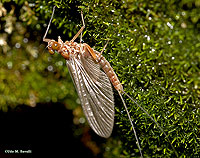
Stream Mayfly, family Heptageniidae; UT |

Stream Mayfly Naiad, family Heptageniidae; AZ | |
Order Odonata
|
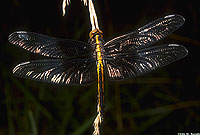
Widow Skimmer, Libellula luctuosa, a dragonfly; KY |
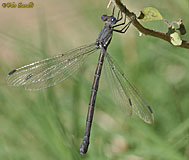
Great Spreadwing, Archilestes grandis, a dragonfly (family Lestidae); AZ |
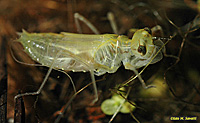
Dragonfly Naiad; AZ |
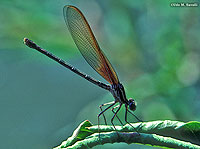
American Rubyspot, Hetaerina americana, a damselfly; CA |

Male & female Desert Firetails, Telebasis salva, damselflies (family Coenagrionidae); AZ |

Exuvium (shed exoskeleton) of a damselfy naiad; CA | |
Clade Neoptera (can fold wings flat) — Subgroup Exopterygota* | |||
Order Plecoptera
|

Green Stonefly (family Chloroperlidae); PA |
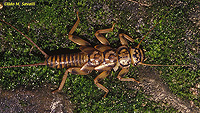
Stonefly Naiad (Order Plecoptera); PA | |
Order Embioptera
|
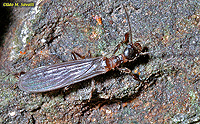
Black Webspinner, Oligotoma nigra, male; AZ (introduced) |
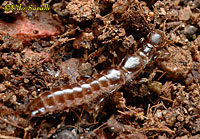
Black Webspinner, Oligotoma nigra, female; AZ |
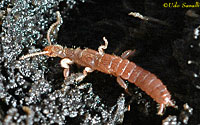
Black Webspinner, Oligotoma nigra, nymph; AZ |
Order Phasmatodea
|
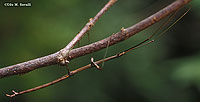
Northern Walkingstick, Diapheromera femorata, male; NY |
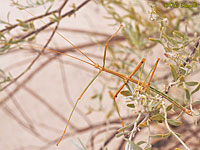
Prairie Walkingstick, Diapheromera velii, NM |

Giant Spiny StickInsect, Eurycantha calcarata |
Order Orthoptera
|
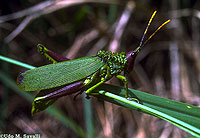
Gaudy Grasshopper, Taphronota calliparea; Kenya See also labeled photo. |
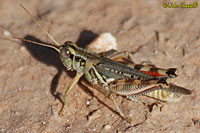
Sagebrush Grasshopper, Melanoplus bowditchi (family Acrididae); NY |
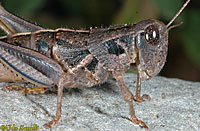
Spur-throated Grasshopper nymph, Melanoplus sp.?; AZ See also labeled photo. |
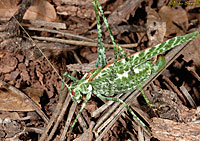
Elegant Bush Katydid, Insara elegans, female (family Tettigoniidae) |
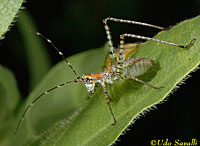
Unidentified Katydid nymph (family Tettigoniidae); AZ |
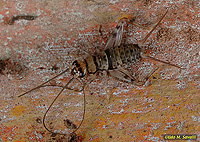
Indian House Cricket, Gryllodes supplicans; AZ | |
Order Blattodea
|
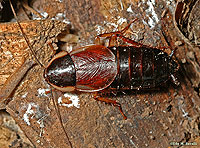
Wood Cockroach, Parcoblatta sp.; KY |
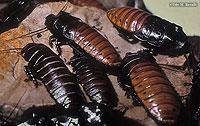
Madagascar Hissing Cockroach, Gromphadorhina portentosa |
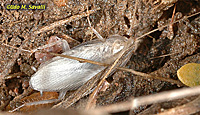
Unidentified Cockroach, recently molted; AZ |
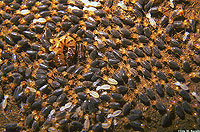
Termites, including queen, king, workers (gray), and nymphs (white); Kenya |
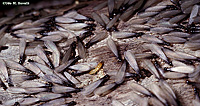
Eastern Subterranean Termite alates & soldier, Reticulitermes flavipes; KY |
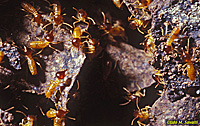
Nasute Termite soldiers, Nasutitermes sp. Their head is modified into a nozzle that squirts a sticky glue on their attackers; Belize. | |
Order Mantodea
|
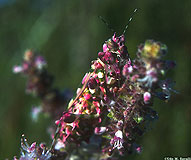
Common Spiny Flower Mantid, Pseudocreobotra wahlbergi; Kenya |
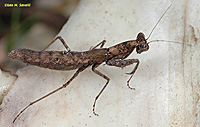
Minor Ground Mantid, Litaneutria minor; AZ |
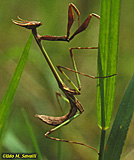
Gargoyle Mantid nymph, Idolomorpha lateralis; Kenya. |
Order Dermaptera
|
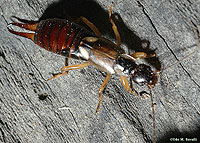
European Earwig, Forficula auricularia; KY |
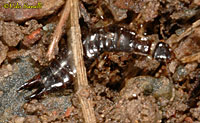
Ring-legged Earwig, Euborellia sp.; AZ |
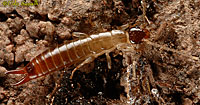
Nymph of an unidentified earwig (family Forficulidae); AZ. |
Order Hemiptera
|
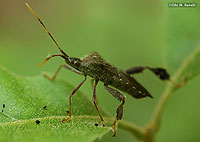
Leaf-footed Bug, Acanthocephala terminalis; KY |
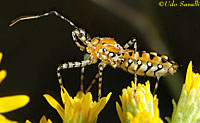
Assassin Bug, Pselliopus sp.; AZ |
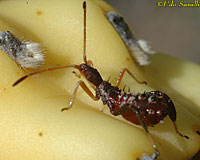
Assasin Bug nymph; AZ |
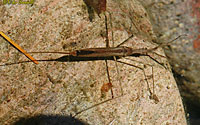
Waterscorpion, Ranatra sp.; AZ |
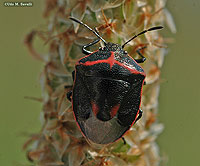
Twice-stabbed Stink Bug, Cosmopepla lintneriana; KY |
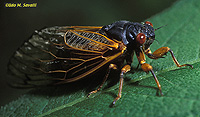
17-Year Periodic Cicada, Magicicada cassini; KY | |

Oleander Aphids, Aphis nerii; AZ |
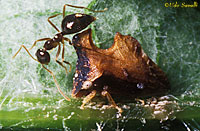
Treehopper, Entylia carinata, attended by ant; NY |
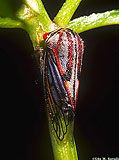
Oak Treehopper, Platycotis vittata; KY | |
Other Orders of the Exopterygota
|
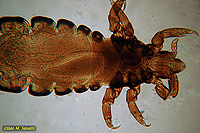
Human Body Louse, Pediculus humanus (Order Phthiraptera) |
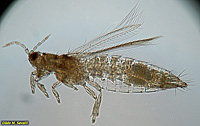
Thrip (Order Thysanoptera) |
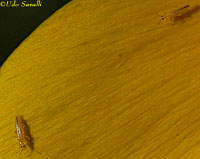
Thrips (Order Thysanoptera) on desert poppy petal; AZ. |
Clade Endopterygota | |||
Order Neuroptera
|
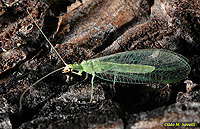
Green Lacewing, Chrysoperla sp.?; AZ |
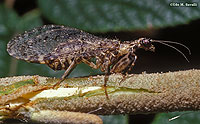
Mantidfly, Plega signata; collected in AZ |
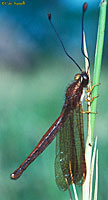
Ascalaphine Owlfly; Kenya |
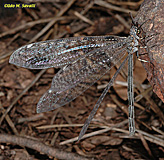
Antlion, Myrmeleon sp.; AZ |
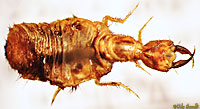
Antlion larva, dried specimen; AZ | ||
Order Megaloptera
|
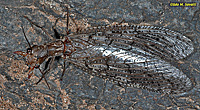
Western Dobsonfly, Corydalus texanus, female; AZ |
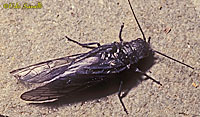
Nearctic Alderfly, Sialis sp.; PA | |
Order Coleoptera
|
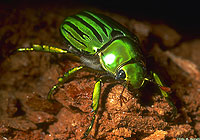
Glorious Beetle, Chrysina gloriosa |
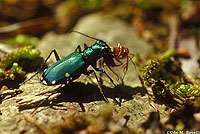
Six-spotted Tiger Beetle, Cicindela sexguttata, eating ant; KY |
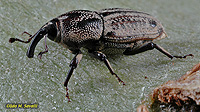
Billbug, Sphenophorus sp.; AZ |
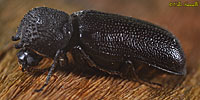
Horned Powderpost Beetle, Apatides fortis; AZ |
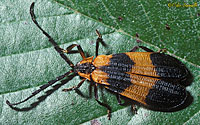
Banded Net-wing, Calopteron terminale; KY |
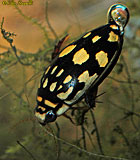
Sunburst Diving Beetle, Thermonectus marmoratus | |
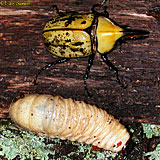
Eastern Hercules Beetles, Dynastes tityus, adult male and larva |
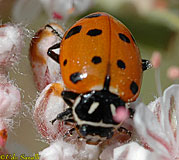
Convergent Lady Beetle, Hippodamia convergens; AZ |
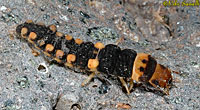
Lady Beetle larva; AZ 
Giraffe Weevils, Trachelophorus sp., male (top) and female (lower left) dried specimens | |
Order Trichoptera
|

Giant Casemaker, Ptilostomis sp.; KY |

Mottled Caddisfly, Hydropsyche sp.; AZ |
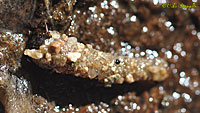
larva and case of Mortarjoint Casemaker Caddisfly (family Odontoceridae); NE |
Order Lepidoptera
|
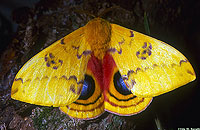
Io Moth, Automeris io; KY |
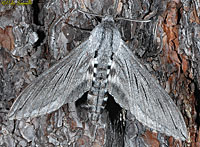
Great Ash Sphinx Moth, Sphinx chersis; AZ |
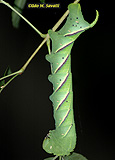
Sphynx Moth Caterpillar, Manduca sp.; AZ |
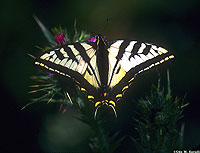
Pale Swallowtail, Papilio eurymedon; CA |
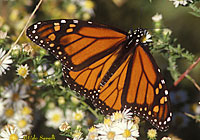
Monarch Butterfly, Danaus plexippus; NJ |

Monarch Butterfly Caterpillar, Danaus plexippus; AZ | |
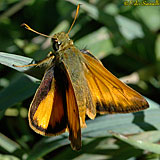
Taxiles Skipper, Poanes taxiles; AZ |
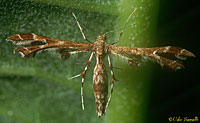
Himmelman's Plume Moth, Geina tenuidactyla; NY |
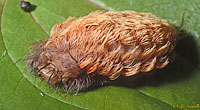
Southern Flannel Moth Caterpillar, Megalopyge opercularis; KY | |
Orders Mecoptera* (& Siphonaptera)
|
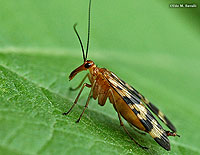
Scorpionfly, Panorpa sp. (Order Mecoptera); KY |
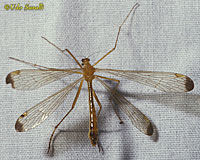
Black-tipped Hangingfly, Hylobittacus apicalis; KY |
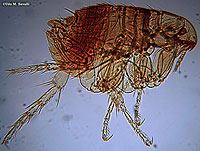
Cat or Dog Flea, Ctenocephalides sp. (Order Siphonaptera) |
Order Diptera
|
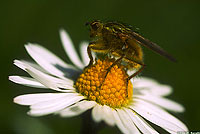
Golden-haired Dung Fly, Scathophaga stercoraria; CA |
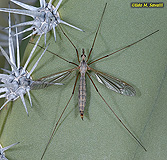
Crane Fly, Tipula sp.; AZ |
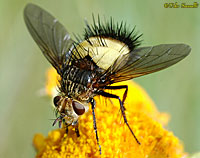
Tachinid Fly, Belvosia sp.; AZ |

Robber Fly, Efferia sp.?; AZ |
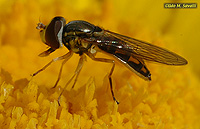
Flower Fly, Toxomerus marginatus; AZ |
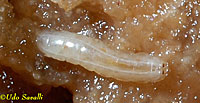
Unidentified Fly Maggot in rotting cactus; AZ | |
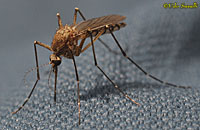
Mosquito, Ochlerotatus sp., female; NM |
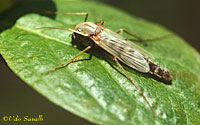
Green Midge, Tanytarsus sp. (family Chironomidae); PA |
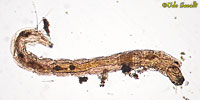
Chironomid Midge Larva, Toxomerus marginatus (aquatic); AZ | |
Order Hymenoptera
|
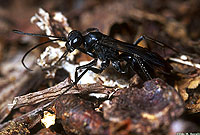
Spider Wasp, Priocnemis minorata; larvae feed on immobilized spiders; NY |
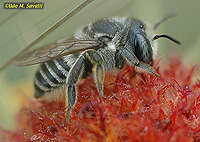
Leaf-cutting Bee, Megachile sp.; CO |
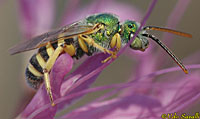
Metallic Green Bee, Agapostemon sp.; UT |
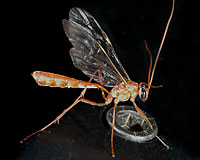
Short-tailed Ichneumon, Ophion sp.; larvae are parasitic on caterpillars; AZ |
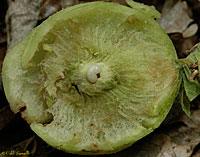
Oak Apple Gall Wasp larva in cut gall, Amphibolips confluenta; KY |
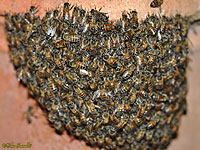
European Honey Bee, Apis mellifera, swarm; many hymenopterans are eusocial; AZ | |

Black-and-yellow Mud Dauber, Sceliphron caementarium; AZ |
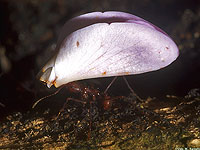
Leaf-cutter Ant, Atta cephalodes; Belize |
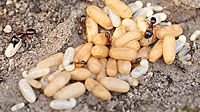
Black-headed Carpenter Ant, Camponotus ocreatus nest with larvae, pupae & 2 worker castes; AZ | |
* = indicates a paraphyletic group | |||
|
This page last updated 24 September 2022 by Udo M. Savalli () Images and text © Udo M. Savalli. All rights reserved. |
